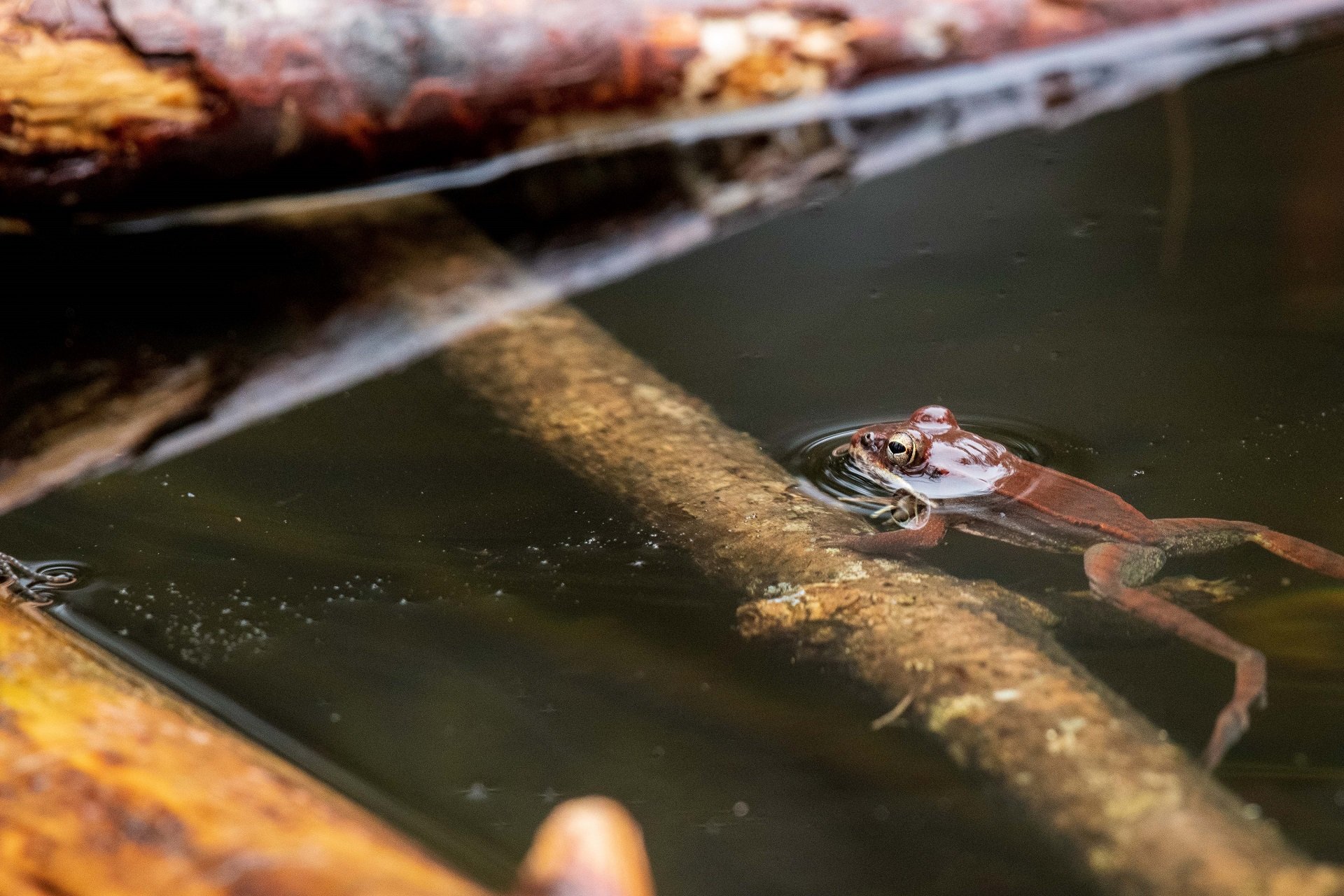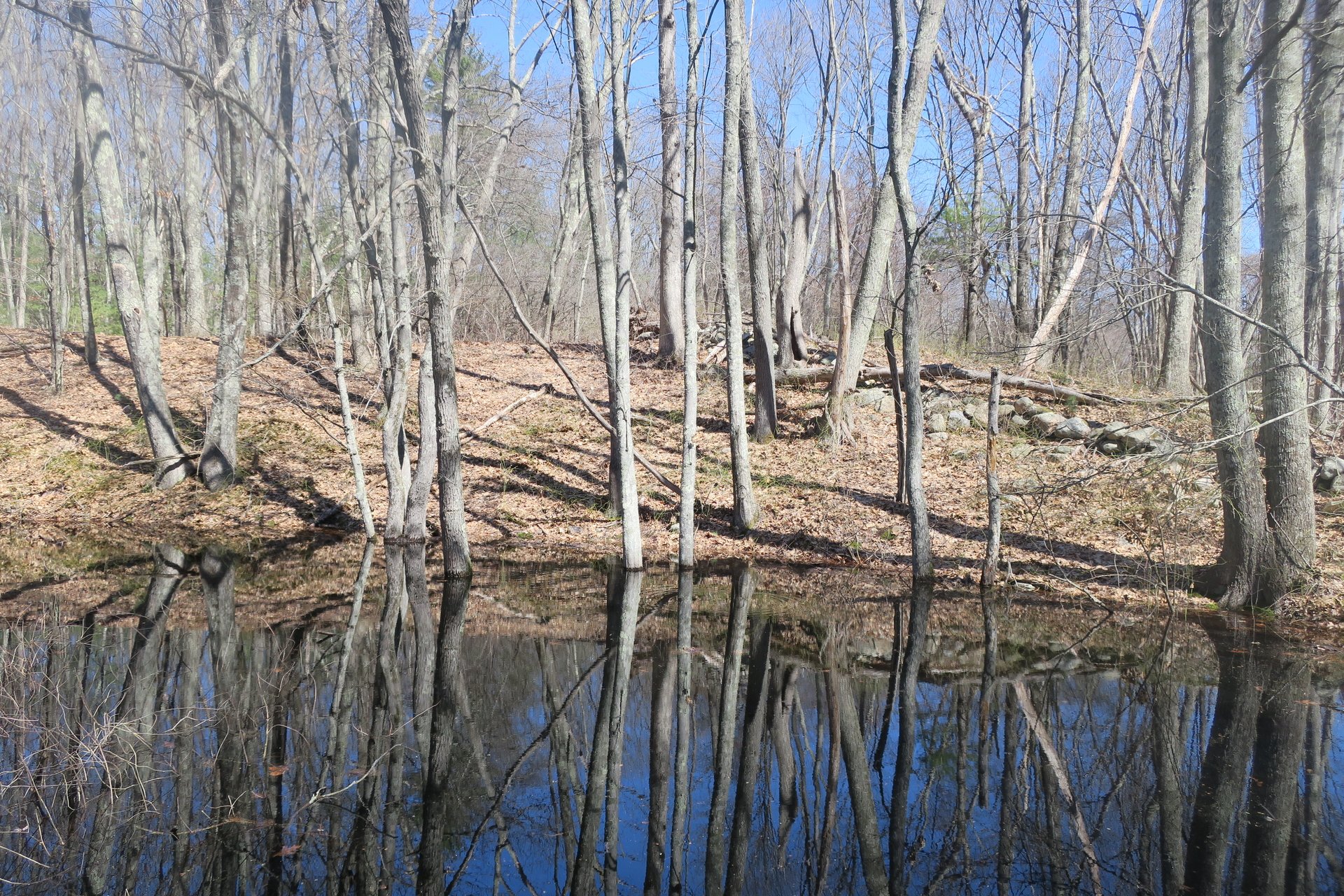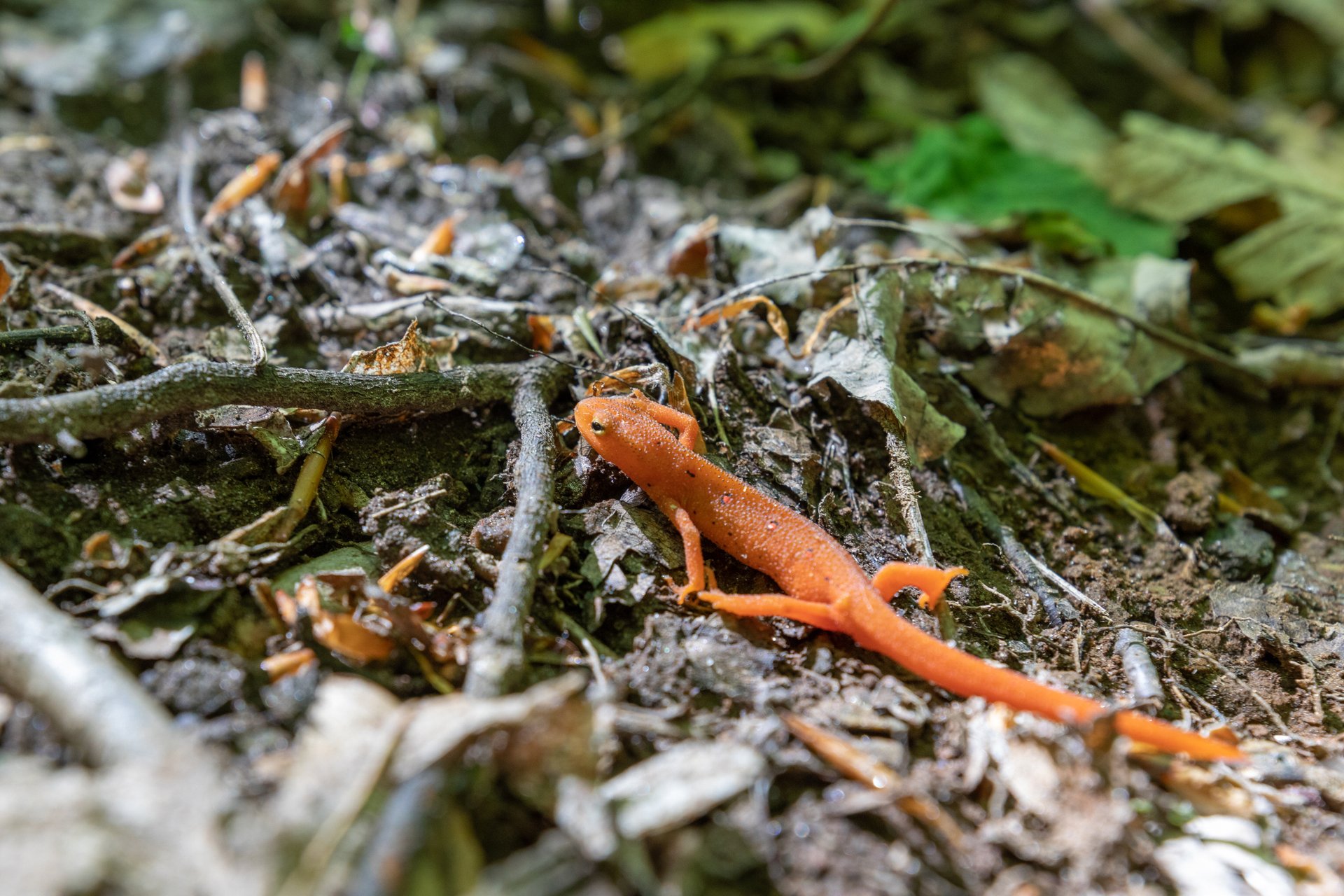Reptiles & Amphibians
Frogs in Massachusetts
Frogs are amphibians, a group of animals that usually live part of their life in water and part of their life on land. A familiar part of the wildlife of Massachusetts, frogs are found across the state. Because of their diverse habitat needs and sensitive skin, these amphibians are good indicators of the health of our environment.
How to Identify Frogs
All toads are frogs, but not all frogs are toads. There are two ways to identify a frog or toad: by how they look and how they sound.
Frogs tend to have bulging eyes and long back legs that help them hop, climb, or swim. They range in color from bright green to brown and often have unique markings that help with identification. One group, the true toad family Bufonidae, has members that can be distinguished by large poison glands behind their eyes, shorter legs, and dry, typically warty skin.
Frogs can be surprisingly vocal. They make calls for a variety of reasons, including attracting mates, telling competitors to back off, and expressing alarm. The calls are valuable identification clues and often mimic other animals like the quacking Wood Frog or the peeping Spring Peeper.
Types of Frogs in Massachusetts
The frogs of Massachusetts come in many colors, and they inhabit a variety of habitats, from lakes to trees to woodlands.
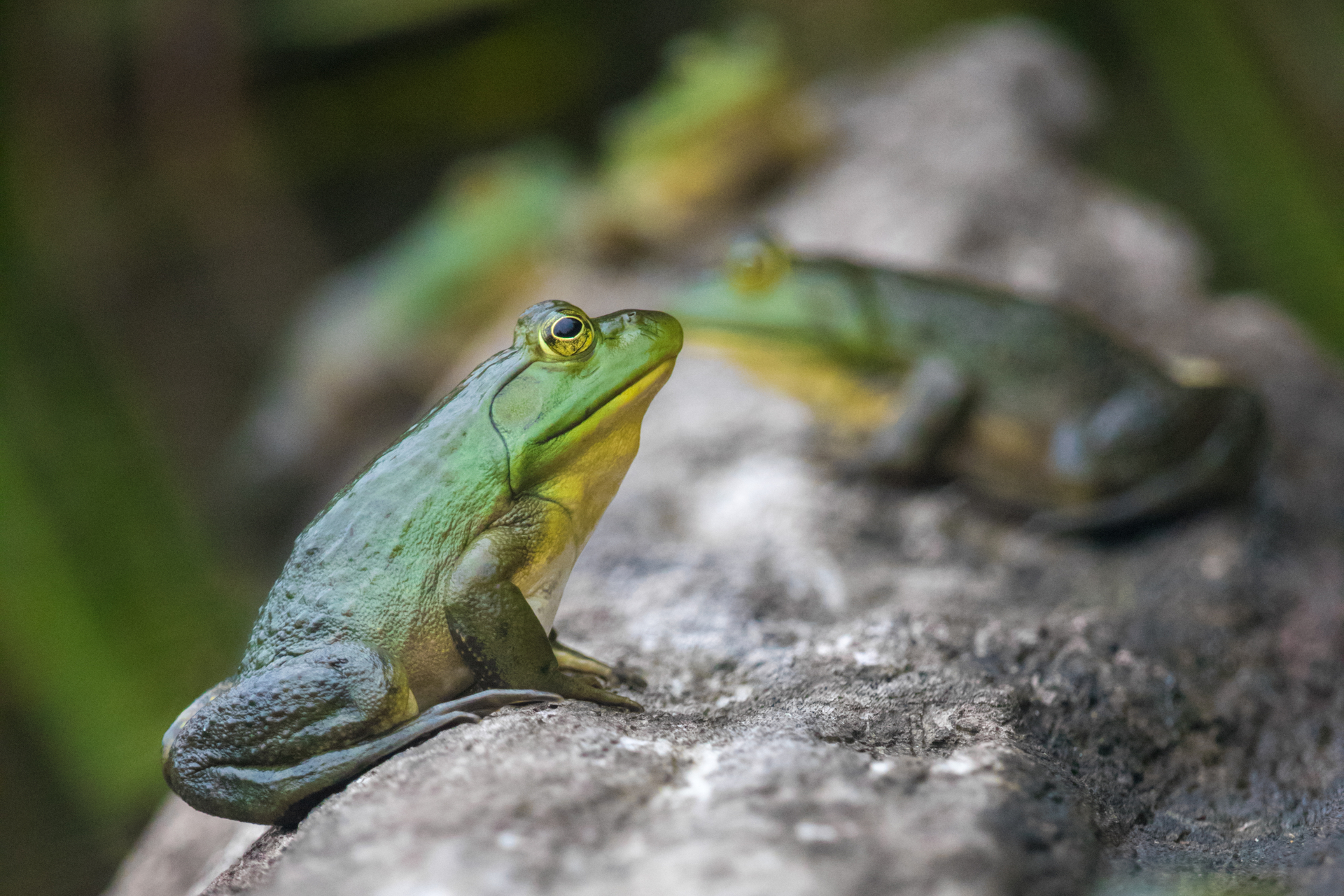
American Bullfrog (Lithobates catesbeianus)
The largest frog found in Massachusetts, the American Bullfrog has a green face and a green-brown body. A ridge of skin runs from its eye curving around its external eardrum (tympanum). Found statewide, it inhabits permanent bodies of water such as ponds and marshes and eats almost anything it can grab. You can hear its deep “jug-a-rum” call in late spring and summer. It lays its eggs as a film on the water’s surface.
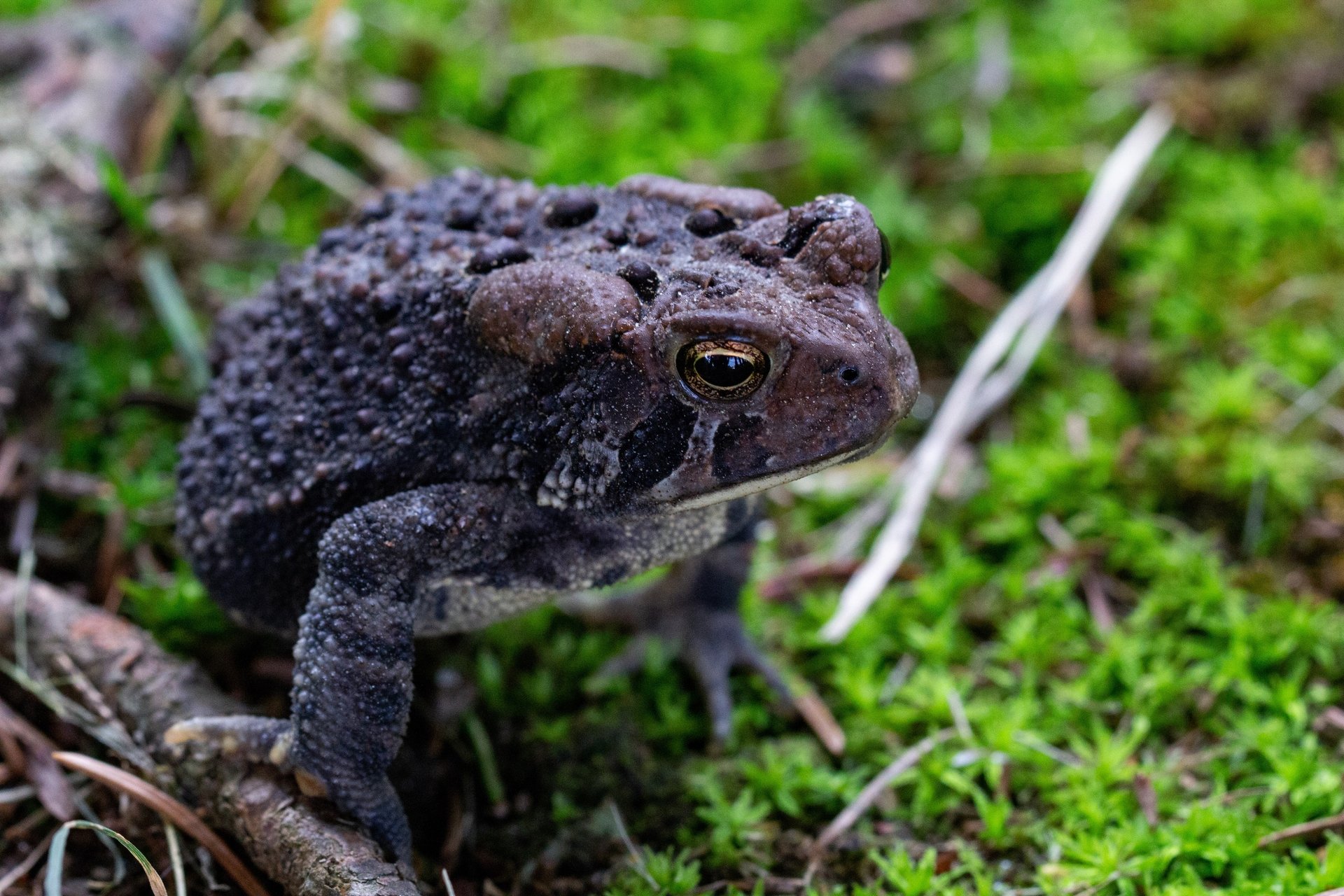
American Toad (Anaxyrus americanus)
A member of the true toad family Bufonidae, the American Toad is brown with large warts and has a white belly with black dots. It can often be found on the forest floor, eating small creatures such as slugs and worms. Its long trilling call is heard in spring and summer, and it lays long strings of eggs. It's found across the state, except on Nantucket.
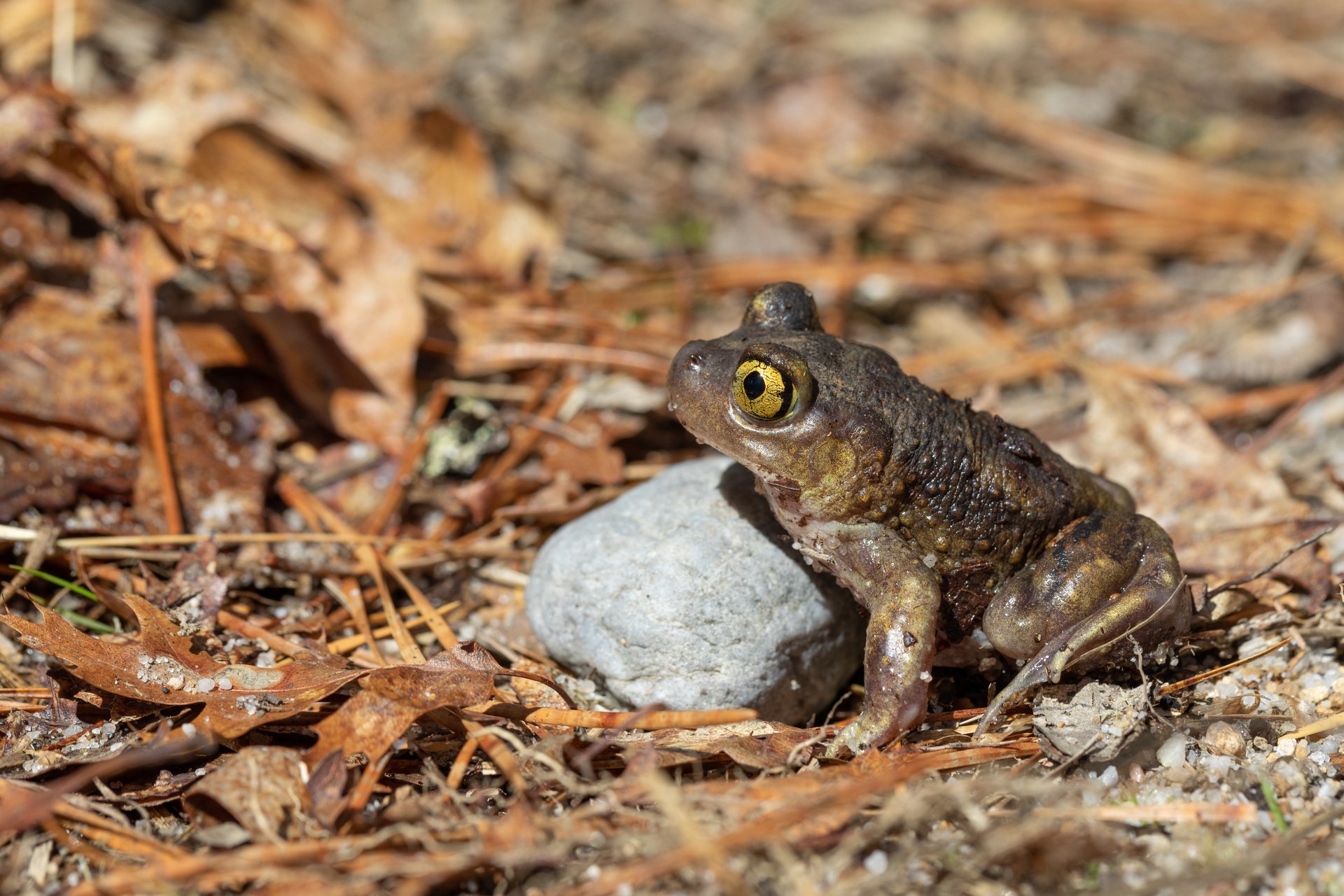
Eastern Spadefoot (Scaphiopus holbrookii)
The elusive Eastern Spadefoot Toad has yellow stripes, small warts, and catlike pupils. The term spadefoot comes from the hard-digging structures on its hind feet. Rarely seen, it spends much of its time underground or hunting for small prey at night. After a strong rainfall event during the warm months, it breeds in shallow temporary vernal pools. It’s mostly found in the Connecticut River Valley and eastern Massachusetts.
It is the only frog in Massachusetts that is listed as Threatened under the Massachusetts Endangered Species Act. Mass Audubon is working to restore the Eastern Spadefoot Toad population on Cape Cod. Learn more about our work with spadefoot toads
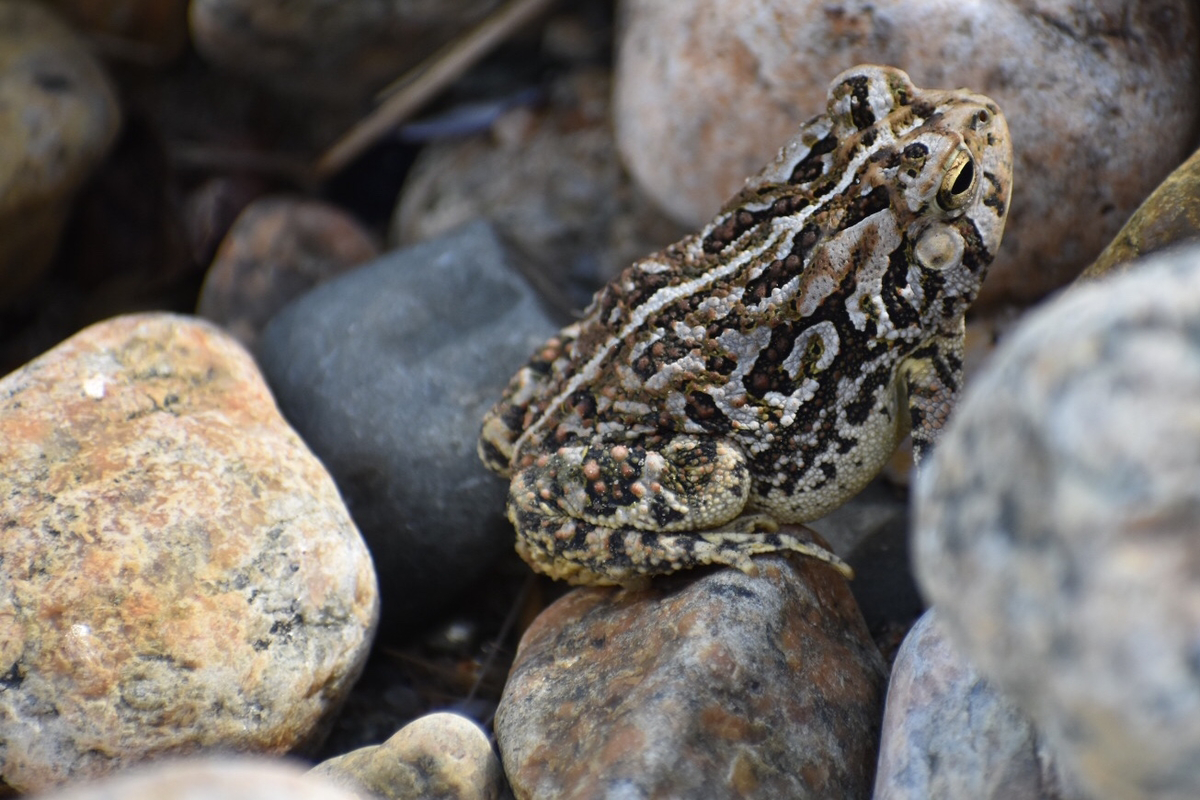
Fowler's Toad (Anaxyrus fowleri)
The Fowler’s Toad looks a lot like the American Toad. However, it has irregular dark blotches, most encompassing three or more warts, and a mostly spotless belly. It’s found in sandy areas near wetlands, and the female lays long strings of eggs in permanent water. Listen for the nasal “wahhh” call in spring and summer. It lives throughout the state except Berkshire county.
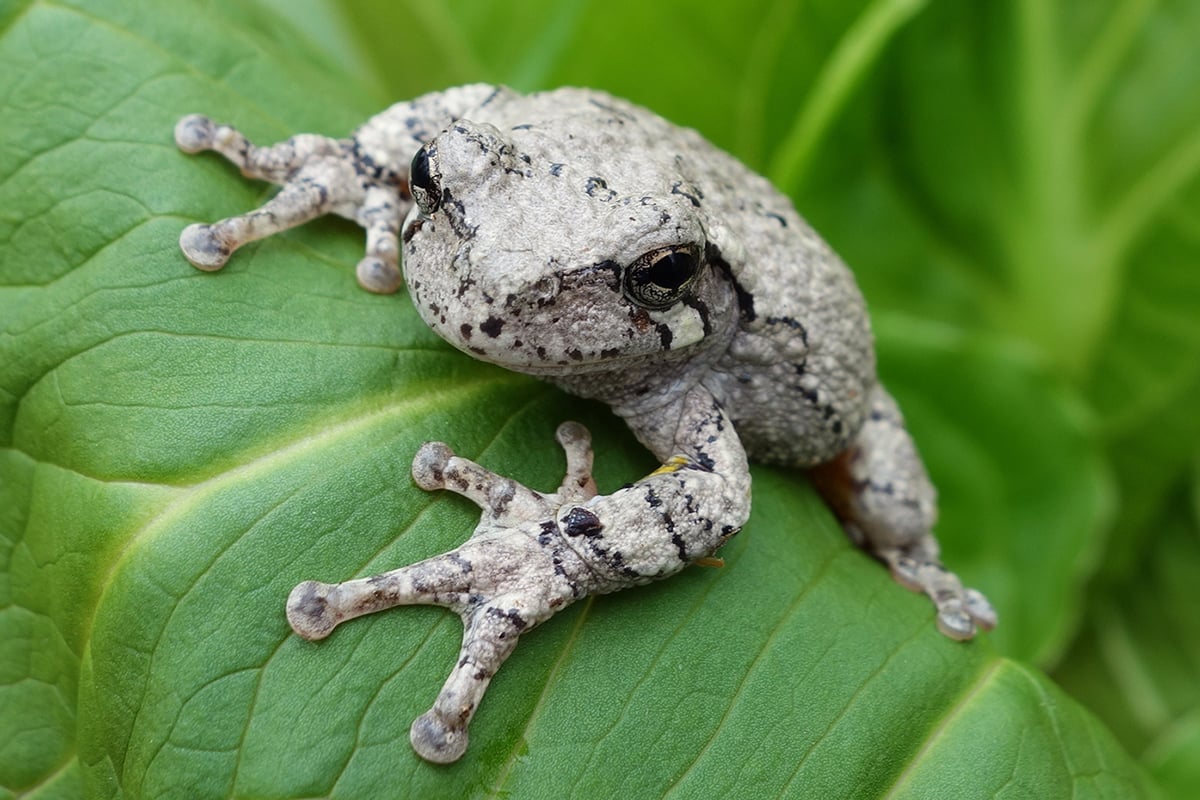
Gray Treefrog (Hyla versicolor)
A master of camouflage, the Gray Treefrog blends in with the tree bark on which it perches and clocks in at just 1.25″–2.25″ in length, with the females often slightly larger than the males. They can change their color based on their environment, ranging from green to gray to brown, but young frogs are typically bright green. It lays clumps of 10 to 14 eggs along the shores of ponds.
Its call is a short, high-pitched trill and can be heard (but difficult to spot) around dusk from spring through summer as they look for mates and establish their territories. It can be found statewide.
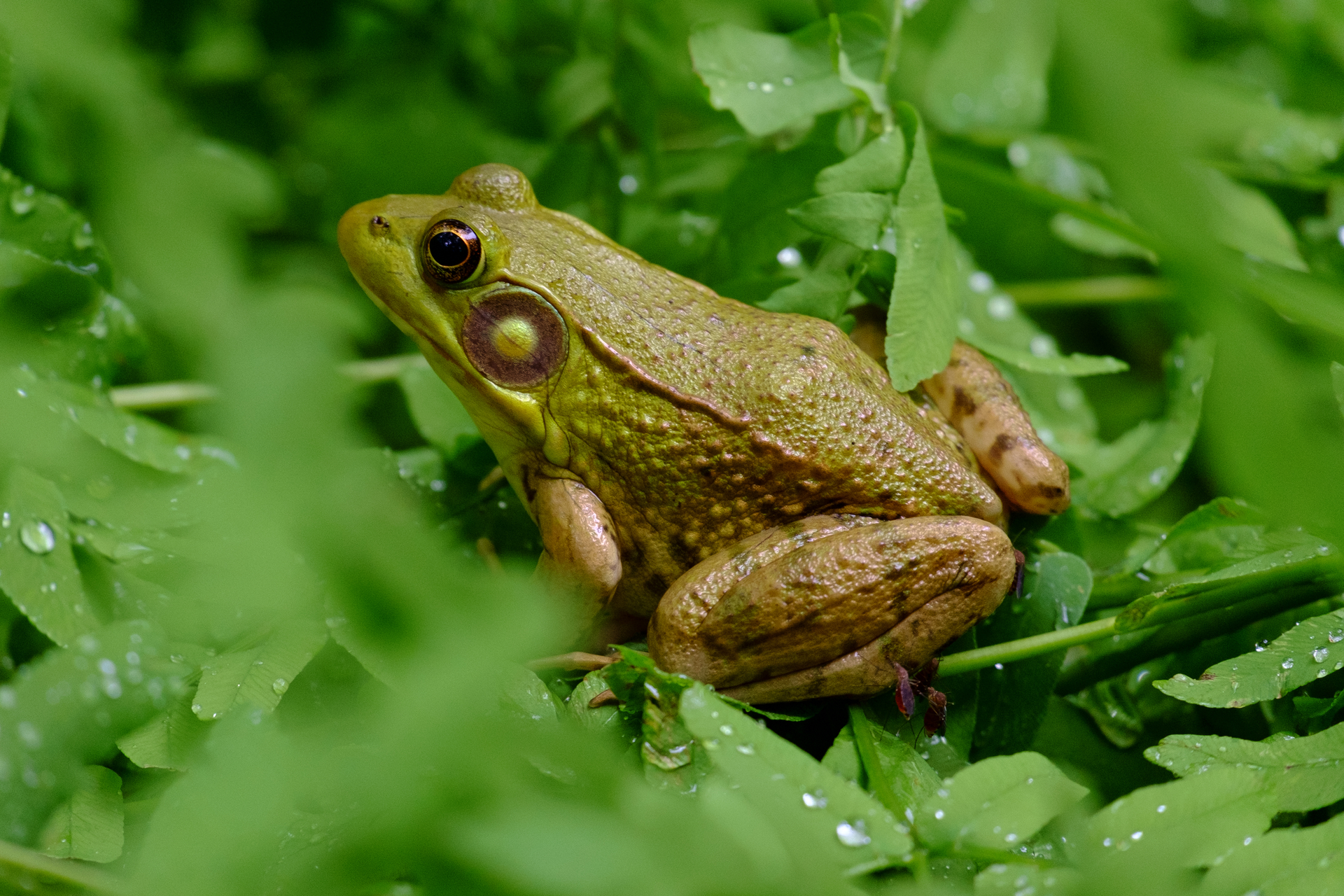
Green Frog (Lithobates clamitans)
The Green Frog is one of our most familiar frogs and is found statewide. It has a green face and a green-brown body, and a ridge running down each of its sides. It prefers permanent or semi-permanent water bodies, eating whatever it can grab, from insects to snakes to birds. The call is a banjo-like “gunk,” and the female lays a thousand or more eggs at a time as a film on the water’s surface.
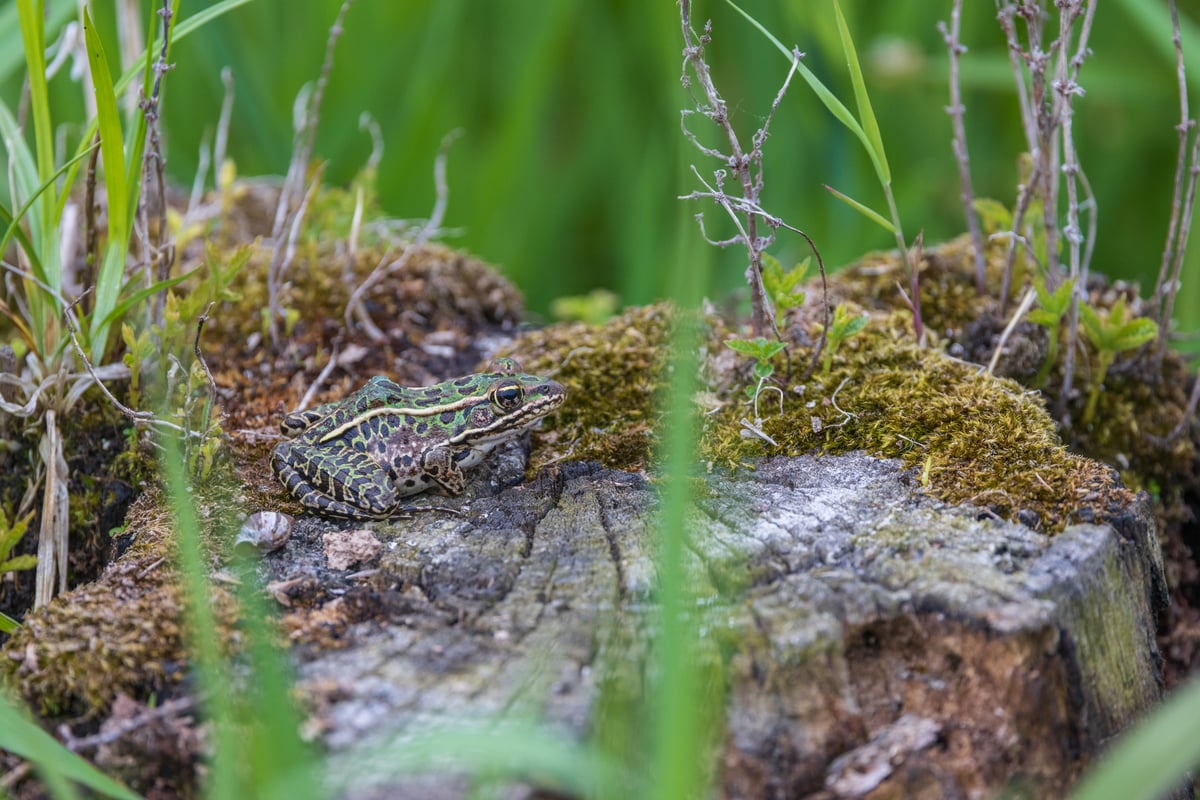
Northern Leopard Frog (Lithobates pipiens)
Named for its pattern, this vibrant Northern Leopard Frog has dark spots outlined in a lighter color. It relies on a diversity of habitats, breeding in marshes and floodplains, hunting in fields, and wintering in permanent water bodies.
In spring, it makes a rattling, grunting call and lays dark masses of eggs. Look for this frog statewide except for Barnstable, Dukes, and Nantucket Counties.
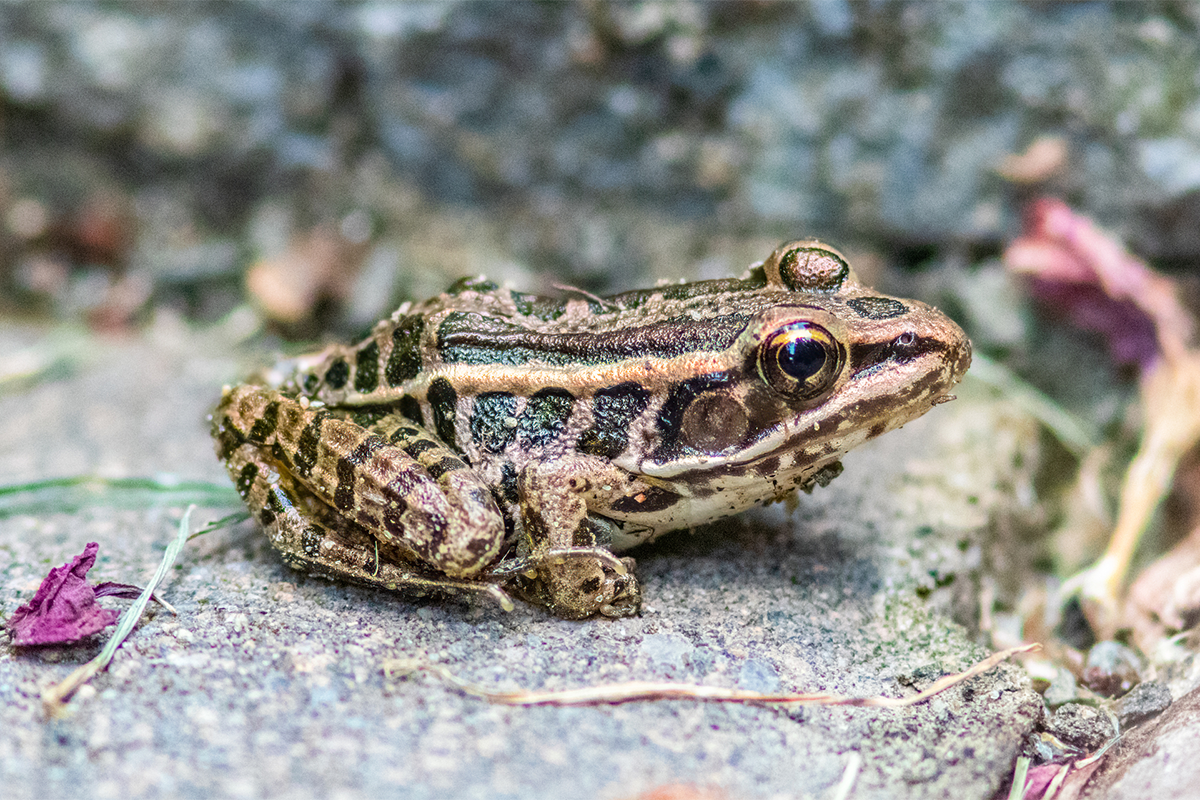
Pickerel Frog (Lithobates palustris)
The Pickerel Frog resembles a leopard frog, but with more angular spots that aren’t lined in a lighter color, and with bright yellow under its waist and down its thighs. Found statewide, it inhabits wet meadows, grassy swamps and bogs, and weedy fields near brooks or streams. It breeds in spring and makes a snoring call.
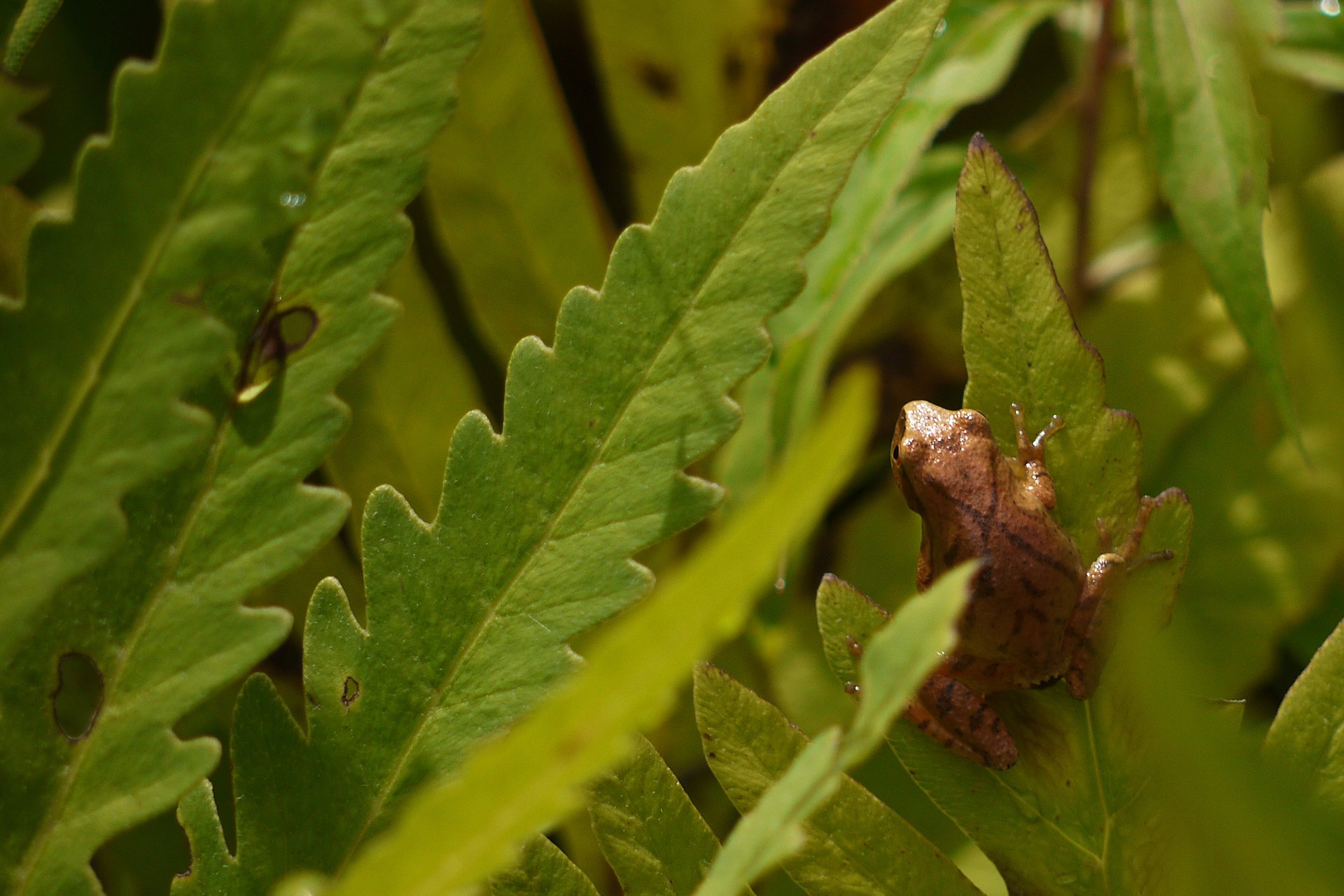
Spring Peeper (Pseudacris crucifer)
A small, round frog, the Spring Peeper often has a brown “x” on its back. This frog inhabits wooded areas near wetlands and ponds across Massachusetts.
Though they're only about an inch in size, their calls carry for a quarter mile. In the spring it makes a loud, high-pitched peeping call to attract a mate. The eggs are laid singly or in small groups on underwater vegetation.
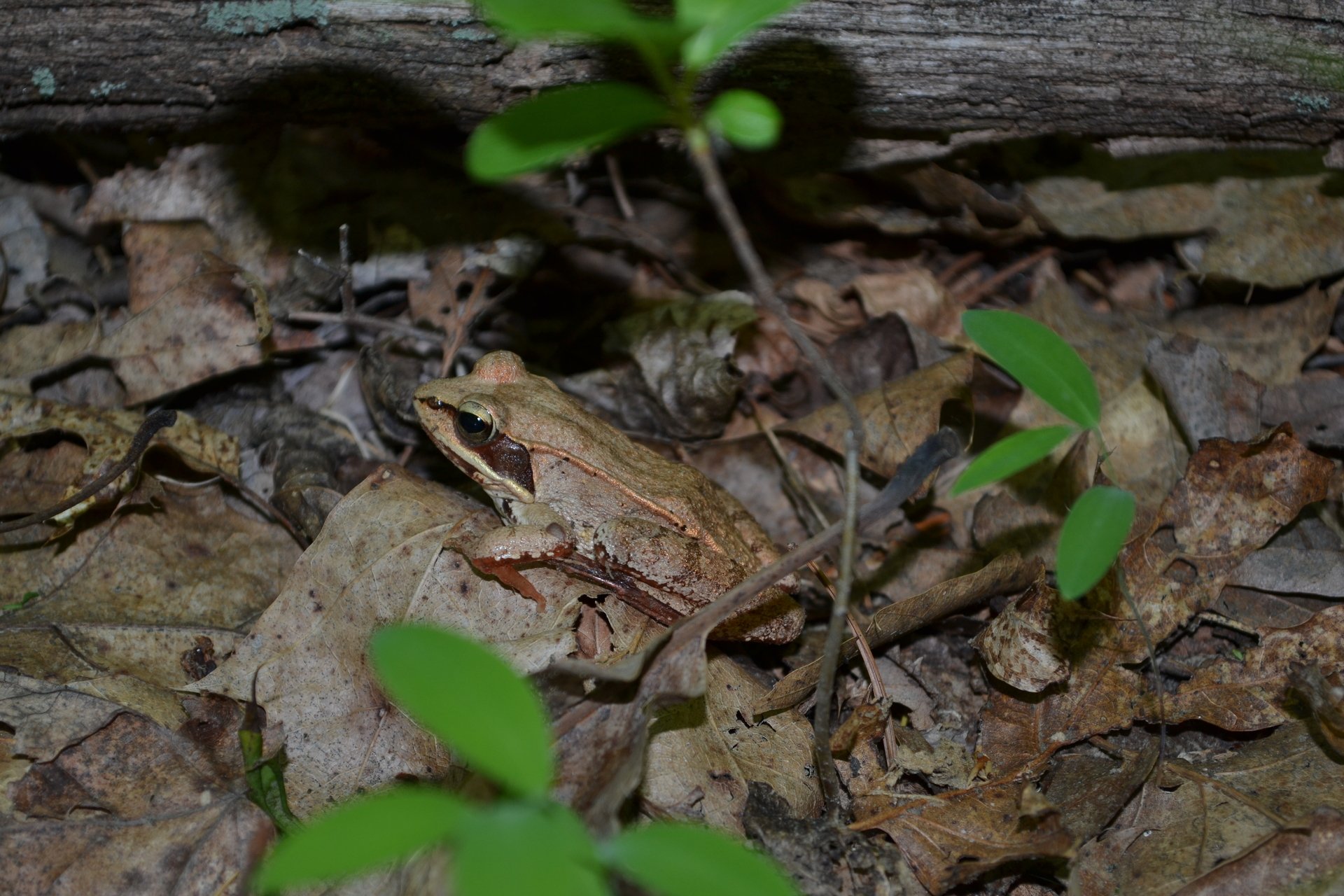
Wood Frog (Lithobates sylvaticus)
The Wood Frog looks somewhat like a much larger spring peeper, but with a dark mask and ridges running down the sides and no pattern on the back. True to its name, it lives in forests, breeding in temporary (vernal) pools.
It attracts mates with a quacking call, and the female lays large masses of eggs. Find this species across Massachusetts.
Frog Lifecycle & Breeding
Frogs generally breed in wetlands. Their mating behavior, called amplexus, involves the male grasping the female and fertilizing her eggs as she releases them. The jelly-like eggs are deposited singly or in masses on underwater plant material or in free-floating films.
When the young hatch, they are tadpoles, breathing through gills and swimming with the help of a flattened tail. Over time they develop legs, lose their tail, and breathe air.
What do Frogs Eat?
Most tadpoles eat aquatic plants and algae, but some consume animal prey such as small fish. Adult frogs are important predators of insects.
Large frogs, such as bullfrogs, may eat other small animals such as mice, small birds, snakes, crayfish, dragonflies, and all smaller frogs.
Frogs drink and breathe through their skin. Although they have lungs in their adult stage, they depend on the oxygen absorbed through their skin, especially when they are swimming underwater.
Threats Facing Frogs
Like all amphibians, frogs are sensitive to pesticides, changes in land use, and climate change. They depend on clean, unpolluted water to complete their larval stages and development, especially on or near vernal pools, can fragment their forested habitat and degrade the wetlands in which they breed.
Frog Predators
Many creatures eat frogs, including herons, Northern Water Snakes, minks, raccoons, and more. Frogs use several strategies to avoid predators. They may leap away, produce alarm calls, produce distasteful or even poisonous chemicals, hide underground, and/or or use camouflage colors.
How Mass Audubon Helps Frogs
Mass Audubon’s work to protect and restore resilient landscapes, mobilize to fight climate change, and provide equitable access to nature has direct impact on frogs.
Mass Audubon regularly monitors the presence of amphibians, including frogs, to enhance our knowledge about the diversity and abundance of amphibians on our wildlife sanctuaries, particularly those of conservation concern. Based on what we learn, we determine if there are any management measures, we could be taking to enhance our wildlife sanctuaries as habitats for amphibians.
For example, in an effort to increase the populations of the once widespread Eastern Spadefoot Toad, Mass Audubon partnered with Zoo New England, the U.S. Fish and Wildlife Service, and the Massachusetts Division of Fisheries and Wildlife to restore over 20 new breeding pools in fields as well as woodland and formerly cultivated land. Learn more about our work with spadefoot toads
What You Can Do to Help Frogs
Our wildlife sanctuaries help frogs and toads by creating safe ecosystems where they can thrive. Many of our sanctuaries have protected vernal pools and mixed habitats of forest and water. As a Mass Audubon member, you help maintain and grow our sanctuaries. Already a member? Make your support go even further with a donation today.
Stay Connected
Don't miss a beat on all the ways you can get outdoors, celebrate nature, and get involved.



